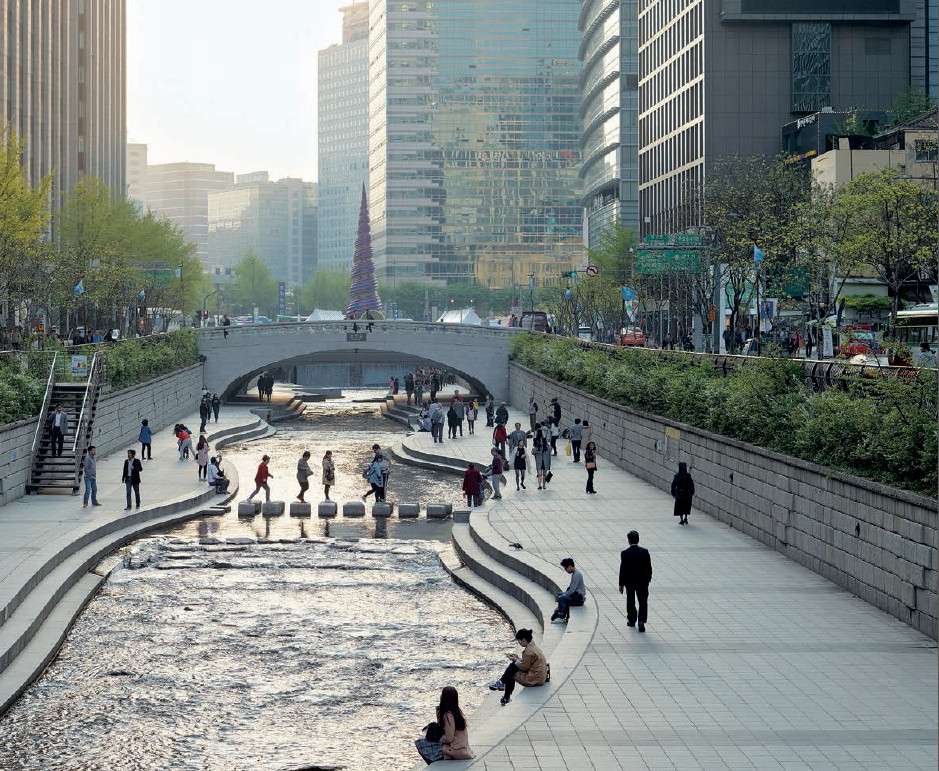Photographic artist Simon Roberts says that cities have gradually opened up more of their private land for public use, driven by the noblesse oblige of sovereigns, then philanthropic industrialists, and now city-dwellers demanding more sustainable cities.Until the 17th century, urban parks in Europe were private land – exclusively owned and used by royalty, the nobility and wealthy families. But when Charles II became King of England in 1660, he opened the grounds of St James’s Park next to his palace in Westminster to the public. Previously a preserve for royal deer-hunting, it became one of the earliest public parks in the world, providing access to land in the centre of London.Noblesse oblige was the King’s motive, and he enjoyed using it to entertain his friends and mingle with his
Topics:
Perspectives Pictet considers the following as important: In Conversation With, Pictet Report, Pictet Report Winter 2018, urban evolution, Urban parks
This could be interesting, too:
Perspectives Pictet writes House View, October 2020
Perspectives Pictet writes Weekly View – Reality check
Perspectives Pictet writes Exceptional Swiss hospitality and haute cuisine
Jessica Martin writes On the ground in over 80 countries – neutral, impartial and independent
Photographic artist Simon Roberts says that cities have gradually opened up more of their private land for public use, driven by the noblesse oblige of sovereigns, then philanthropic industrialists, and now city-dwellers demanding more sustainable cities.
Until the 17th century, urban parks in Europe were private land – exclusively owned and used by royalty, the nobility and wealthy families. But when Charles II became King of England in 1660, he opened the grounds of St James’s Park next to his palace in Westminster to the public. Previously a preserve for royal deer-hunting, it became one of the earliest public parks in the world, providing access to land in the centre of London.
Noblesse oblige was the King’s motive, and he enjoyed using it to entertain his friends and mingle with his subjects. But as more public parks opened in cities in Europe and the US during the following centuries, their creators changed and their purpose evolved.
‘Today, urban parks are increasingly being created from reclaimed land in and around cities,’ says Simon Roberts, a British photographic artist whose work focuses on important social, economic and political issues. ‘Viewed as essential to the well-being of residents and an effective way to promote economic development, they are ushering in a new imaginative era of experimentation.’
In the early years of urban parks, they were seen as a way to serve the public and later as a remedy for the social ills of the Industrial Revolution and the slums created for the workers. But as cities began to grow very fast, visionaries, philanthropists, city bodies and royal benefactors around the world created ambitious public parks to be enjoyed by all classes.
The English Garden in Munich, created in 1789 for the Elector of Bavaria and still one of the largest urban public parks in the world, was located on the edge of the city and adopted the English informal landscape gardening designs associated with Capability Brown. ‘Traffic was kept away from the park,’ says Simon Roberts, ‘and there were grand views that gave the city’s population the feeling of being close to nature.’
New York’s Central Park was established in 1857 after the city had nearly quadrupled in population in 35 years. It was the first urban landscaped park in the US, designed to be a place for both the wealthy to be noticed in their carriages and the poor to spend their leisure time. More than 42 million people now visit it each year, yet there are still pockets of tranquillity for visitors who come for birdwatching.
Enlightened industrialists provided quality housing with green spaces and sports facilities for their factory workers, such as the model village at Bournville in Birmingham, where Cadbury had located its chocolate factory. Other model villages followed their example, including Port Sunlight on Merseyside, which was built by Lever Brothers for workers in its soap factory (now part of Unilever).
Gradually, urban parks began to be developed on reclaimed land, such as Silesian Park at Chorzów in Southern Poland. During the 1950s, a wasteland of slag-heaps, garbage dumps and sewage lakes twice the size of Central Park was transformed by the local communist leader into a verdant area that includes a zoo and full-scale replicas of dinosaurs found by a Polish expedition to the Gobi desert. A more recent example is New York’s High Line, a 2.3 kilometre elevated linear park, created on a former railway viaduct that had connected warehouses and factories on Manhattan’s West Side. Opened in stages beginning in 2009, it now attracts more than 5 million visitors a year, who enjoy views of Manhattan and its buildings from the elevated viewpoints.
‘It has been so successful that cities around the world are trying to replicate it in what has become known as the High Line Effect,’ says Simon Roberts. ‘Money is invested in disused industrial areas to transform them into public parks, which leads to the redevelopment of old commercial buildings, the arrival of new businesses and the growth of tourism.’

